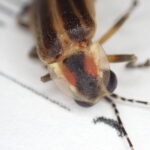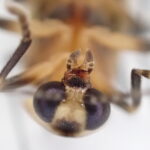Observation: Photuris salina
Primary Observer:
Richard Joyce
Event Date:
2023-07-13
Status:
Verified





Survey
Site Name:
Great Bay Boulevard Wildlife Management Area- Little Egg Harbor Township
Province/State:
New Jersey
Event Date:
2023-07-13
Time of Day:
Night-Time
Start Time:
21:24
End Time:
22:46
Number of Observers:
4
Primary Observer:
Richard Joyce
Additional Observers:
Jack McDonough, Savanna Berg, Amanda Archer
Target Species Genus:
Photuris
Target Species Species:
salina
Location and Habitat
Location Accuracy (meters):
0-25
Habitat Type:
Tidal Marsh - Salt marsh or brackish marsh
Habitat Type Notes:
High quality Spartina salt marsh with numerous pools. Mostly short-form Spartina alterniflora, with some large patches of Spartina patens.
Elevation (meters):
0.6
Area Searched (hectares):
0.8
Artificial Light Sources
Vehicles: Yes
Street Lights: No
Buildings: Yes
Street Lights: No
Buildings: Yes
Artificial Light Types
Sky Glow (diffuse illumination in the sky): Yes
Light Trespass (light cast on surfaces beyond its intended target): No
Glare (bright light causing visual discomfort): Yes
Light Trespass (light cast on surfaces beyond its intended target): No
Glare (bright light causing visual discomfort): Yes
Artificial Light Notes:
The dominant forms of ALAN are sky glow and glare from urban areas on the horizon.
Observation
Observation Type:
Flashing
Number Observed:
11-50
Genus:
Photuris
Species:
salina
Observation Notes:
Because of the strong breeze from the south, many of the observed P. salina were giving their flash patterns from perches on the vegetation.
Specimen Voucher Number:
Flash Behavior
First Flash Time:
21:24
Last Flash Time:
22:46
First Flash Temp (F):
80.1
Last Flash Temp (F):
80.1
Flashes in Pattern:
1
Flash Color:
Green
Flash Pattern Period:
1.8
Flash Duration:
Not recorded
Flash Interval:
Not recorded
Male Height Zone:
Low (0-3 ft)
Flash Location:
Tips of Spartina grasses and on shrubs along Great Bay Boulevard.
Male Flash Behavior:
Flashes about every 1.8 seconds from the tips of the vegetation. When the wind calmed down, they would begin flashing in flight rather than perched.
Female Flash Behavior:
Not observed.



